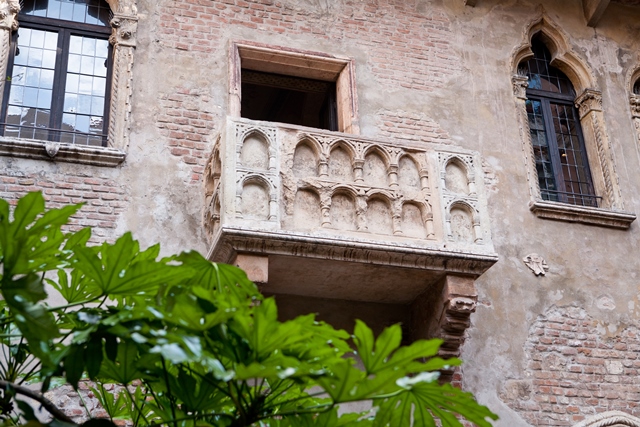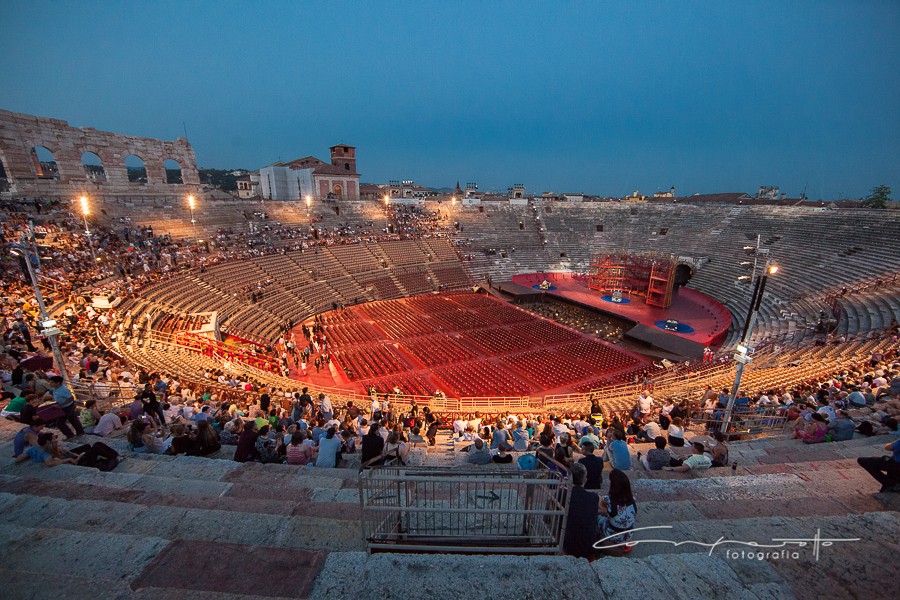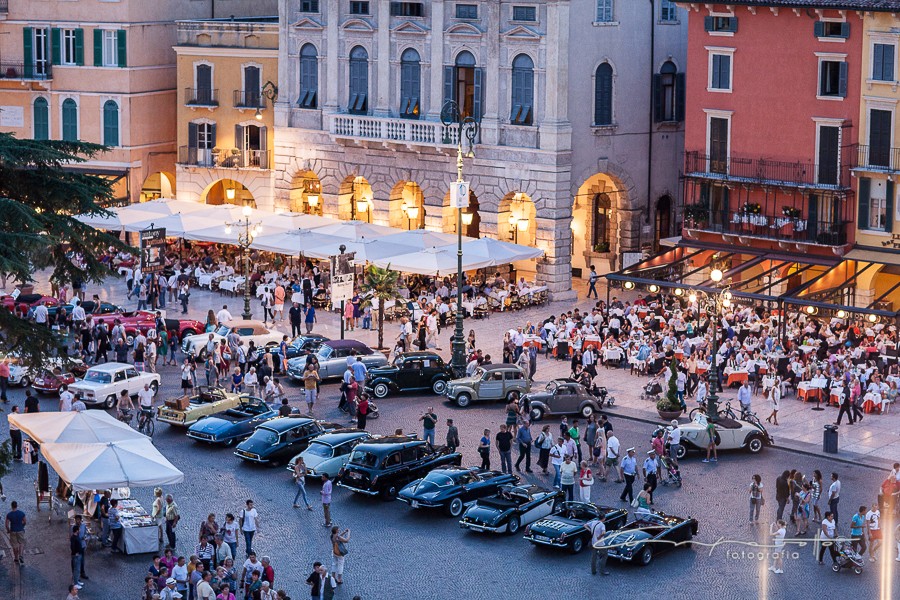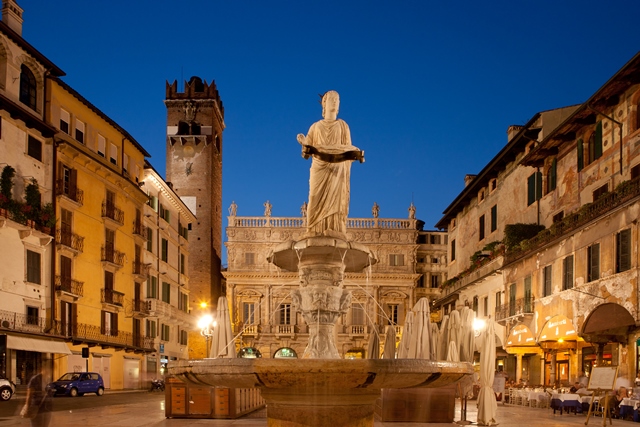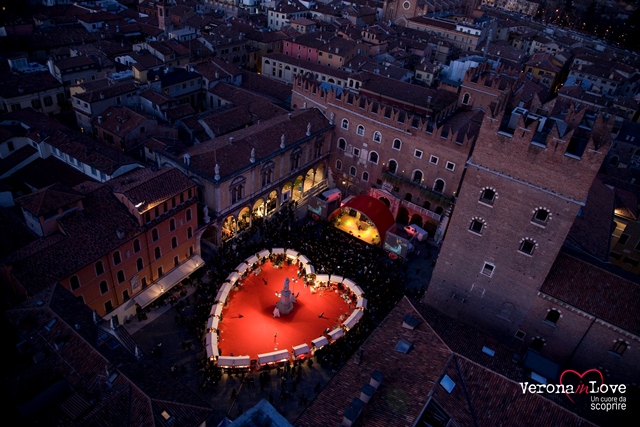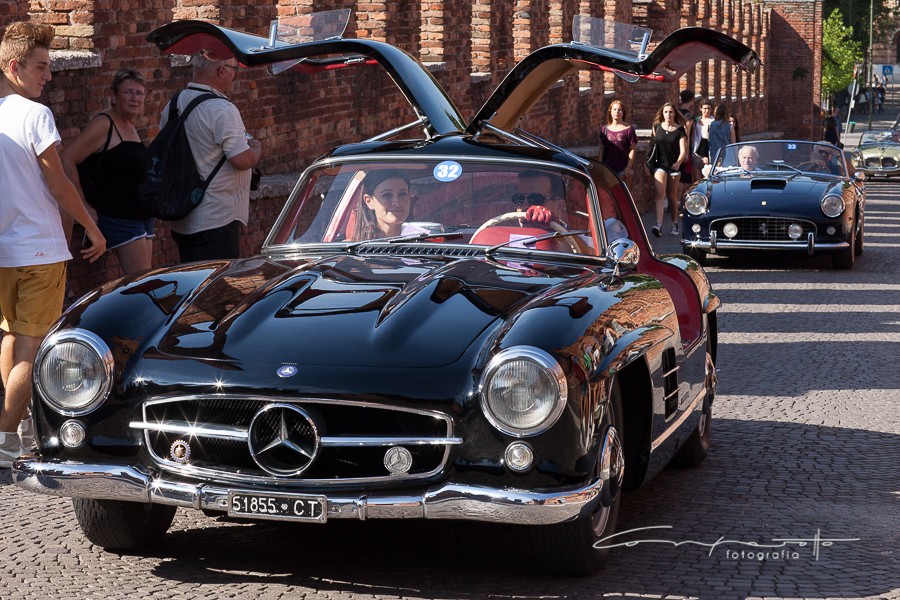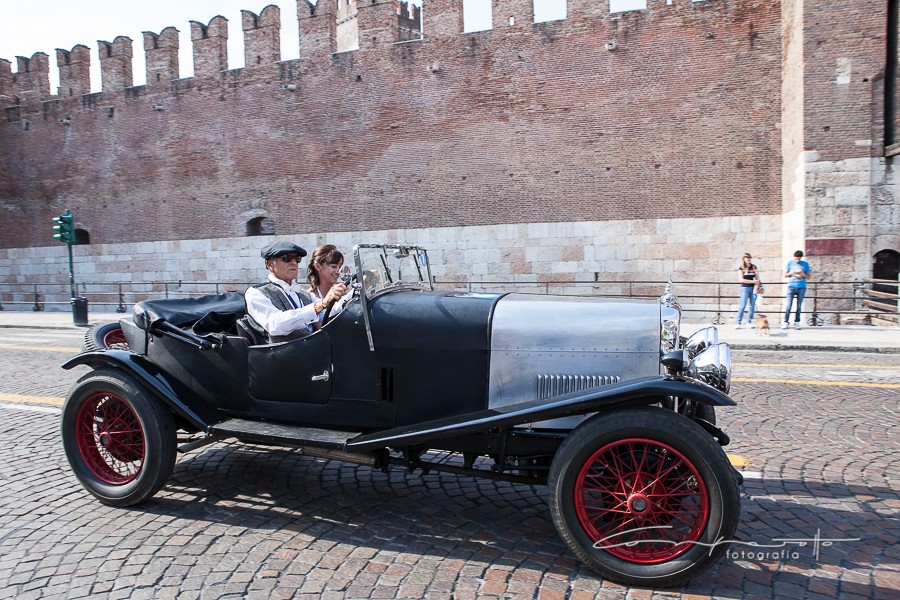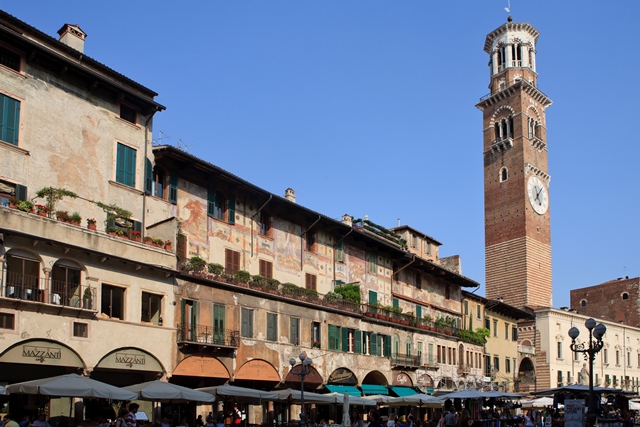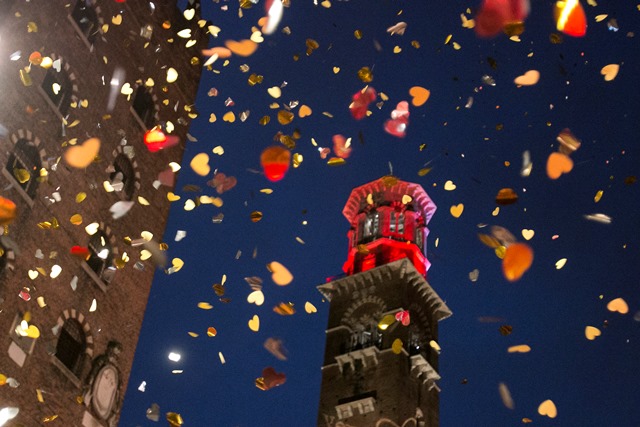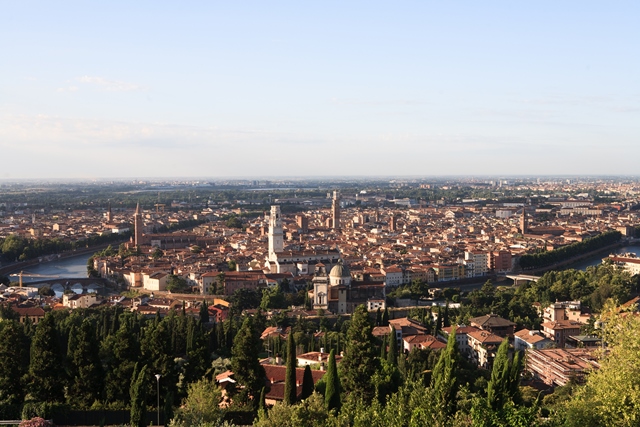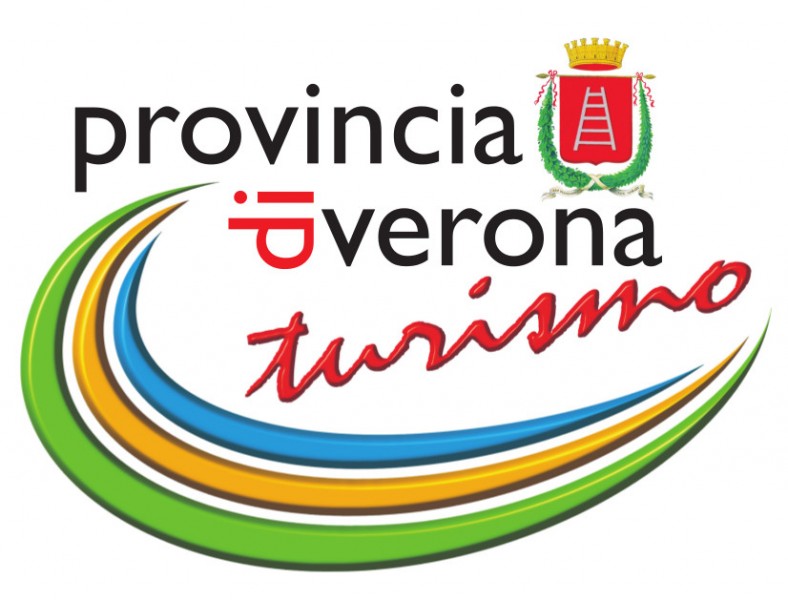10 mins away – VERONA
Verona, the city of Shakespeare’s Romeo and Juliet, is listed as a UNESCO World Heritage site, and is second only to Rome for its number of well preserved Roman remains.
Every year, its world famous Arena (the third largest Roman amphitheatre in Italy) holds an extremely important opera festival staging about 50 operatic performances per season.
But Verona is not just the Arena. It also has an important exhibition centre that hosts some of the top national exhibitions like Vinitaly, the Horse Fair, Marmomac, Motorbike Expo, Eica and many more.
The many faces of the “Queen of the Adige”
It is absolutely true: Verona, elegantly leaning since times long forgotten next to a deep bend in the great river that descends from the Alps, besides being one of the most beautiful medium-large sized cities in Italy, preserves memories – and what memories! – of several historical periods. It has always been well aware of its charm and importance: in Roman times, when its position on Via Postumia, the consular road, gave it strategic and mercantile importance and in the times of Teodorico and Alboino, when it was competing against Pavia; during the times of the medieval communes and in the short but brilliant period of the Scaligera family reign to then be subject to the Visconti and Carraresi families, Venice and Austria. Its is still thriving as an important city today with considerable economic power and, above all, as a much-loved and well-visited location due to its consolidated image as an artistic and historic centre brimming with environmental splendour.
The necessarily summarised itinerary of the ‘obligatory places to see’ in the city starts with classic antiquity: from the famous Arena, an amphitheatre that dates back to the first century B.C., to the Bòrsari city gate (first century A.D.), which stood on the ancient Via Postumia, and the Roman theatre. The tour continues with magnificent medieval and noble constructions: the churches of St. Zeno Maggiore (with its famous triptych by Mantegna) and St. Fermo Maggiore (with frescoes by Pisanello), the Cathedral and St. Anastasia Church, the Scaligeri family tombs and Castelvecchio Castle (with its wonderful Civic Museum). Lastly, the medieval charm of Piazza delle Erbe and Piazza dei Signori (with that marvellous Renaissance extension on the Council Loggia), and many other often illustrious works (don’t miss St. George in Braida, a four-fifth century church featuring St. George the Martyr, a masterpiece by Veronese), which dates back to the Venetian period.
The text and photo from “The many faces of the Queen of the Adige” are taken from the Industrial Tourism Guide in Italy edited by the Italian Touring Club in 2003 and compiled on the initiative of, and in collaboration with, Associazione Museimpresa.
ROMEO & JULIET
The story of Romeo and Juliet took place in 1303 when Verona was UNDER THE DOMINION OF THE SCALIGERI FAMILY. After the reign of Alberto I della Scala, in 1301 the regency passed into the hands of the magnanimous Bartolomeo, who tried in vain to repress the hatred and rivalry that existed between the Veronese families, which were divided into the Guelf and Ghibelline factions. At those times, rivalry between the Montecchi (Montague) and Capuleti (Capulet) families was so heated that DANTE ALIGHIERI, exiled from Florence and a guest of the Scaligeri family, mentioned them in the 4th canto of his Purgatory.
The MONTAGUES and CAPULETS, two leading families in Verona, are enemies. Romeo Montague, while attending a masked ball at the Capulet’s house, discovers true passion on seeing Juliet. After the ball, where the two young people meet and fall in love, in the shadows beneath Juliet’s BALCONY, Romeo hears her confessing her love for him to the night and obtains her consent to marry him in secret. With the help of friar Lawrence, they marry the following day. Mercutio, Romeo’s friend, meets TYBALT, Madonna Capulet’s nephew, who is furious at discovering Romeo at the ball and the two begin to fight. Romeo intervenes and, on Tybalt’s challenge, responds with words that further darken the new relationship, but he refuses to fight. Mercutio is ashamed of this submission and draws his sword. Romeo tries in vain to separate the two rivals only managing to offer Tybalt the chance to mortally wound MERCUTIO. In this way Romeo is also drawn into the fight and kills Tybalt.
Romeo is BANISHED, and the next day, after having spent the night with Juliet, he leaves Verona on the friar’s suggestion, who intends to publically announce the marriage at a suitable moment. Juliet, forced by her father and nurse to marry Count Paris, pretends to consent but, in secret agreement with friar Lawrence, she plans to drink a POTION that, on the eve of her wedding, will make her look dead for forty hours. Friar Lawrence is to inform Romeo of the plan, who will then rescue Juliet from the tomb on her awakening and take her to Mantua. Juliet carries out the plan but Romeo never receives the message because the messenger is held up on suspicion of infection. He only receives notification of Juliet’s death. Romeo acquires a special and powerful poison and rushes to the tomb to see his love for the last time. At the entrance he bumps into Paris and kills him. Then, after KISSING JULIET for the last time, he drinks the poison. A few minutes later, Juliet wakes up and finds the body of her beloved Romeo with the poison goblet still in his hand. She realises what has happened and STABS HERSELF. This tragic ending is told by the friar and the heads of the two rival families, moved by the catastrophe that their hostility has caused, vow to make their peace. Source www.verona.net.
THE ARENA & THE ROMANS
The Arena is the monument that most recalls the city’s Roman origins and is the city’s world famous symbol. Every summer since 1913, its steps welcome 600,000 spectators at the greatest operatic season in the world. The Verona Arena is a splendid amphitheatre, the third largest
in existence today and the best preserved, even though a POWERFUL EARTHQUAKE in 1183 destroyed the third set of arches that once encircled it completely. Nowadays, only a small section of this circle remains, a wing comprising four spans which allow us to imagine the imposing appearance of the original arena. The internal set of arches is perfectly intact and is an unbroken series of 72 double, stone arches that create a 110-metre wide and 140-metre long oval.
Built in marble extracted from nearby quarries in the FIRST CENTURY A.D., the arena was originally located outside the city walls. For defensive reasons, caused by constant Barbarian raids, in 265, it was enclosed inside the urban perimeter by strong walls that Emperor Gallieno had built. The GALLIENO WALLS are still visible today in and around Gallieno Square. The internal oval is about seventy-four metres long and forty-five metres across. The large cavea, or enclosure, contains forty-five steps with an overall average height of one hundred metres. Over the years of the Roman Empire, the arena hosted numerous gladiator fights, also mentioned by Plinio the Young, and, over the centuries it has hosted performances of every kind: tournaments, jousts, duels, ballets, circuses and recitals. In the nineteenth century, some ‘luminaries’ had the bright idea to use it for HOT AIR BALLOON take offs and BULLFIGHTS which, in 1805, were attended by Napoleon Bonaparte himself.
Inhabited for as long as anyone can remember, Verona experienced its first stable relations with Rome in the fourth century B.C. and, right from 216 B.C., the people that lived in this area had already reached such numbers as to be recorded as “present with its own contingent in the Roman army that fought at the battle of Cannes.” In 148 B.C., Verona was included on the Via Postumia route that united the Tyrrhenian and Adriatic seas and, in 49 B.C., it became a Municipium obtaining Roman citizenship. Theatres, walls, temples, palaces, aqueducts and sewers were built and the Eternal City reached its maximum splendour in the Flavian Era. The city still has many buildings and monuments testifying its Roman origins and the importance it played in the years of the Empire… ..Source www.verona.net For further information
THE OPERA SEASON
Since the summer of 1913, the Arena has been hosting a splendid OPERA SEASON, originally organised by the Veronese tenor, Giovanni Zenatello to celebrate Giuseppe Verdi’s centenary. The first opera to be performed on 10th August, was AIDA, the most spectacular of all Verdi’s operas and extraordinarily suitable for the amphitheatre’s grandeur, sustained by its marvellous acoustics. The performance of that first edition of Aida in the arena was one of the most important international events of the early twentieth century. Thousands of spectators flocked to Verona from all over Italy and abroad: Americans, Argentines, British, French, Russians, Germans, Dutch and Spanish. The premiere was attended by illustrious musicians and writers like Puccini, Mascagni, Pizzetti, Kafka, and was a triumphant success.
The greatest open-air operatic season had begun and, since then, the flow of public has always awarded its inventors. Every summer the Arena hosts 600,000 spectators for about FIFTY EVENINGS, with five or six productions that alternate and which have seen performances from all the leading opera singers. Those who attend a performance in the Arena are struck by the scenographic splendour and the fast scenery changes, by the dimensions of the orchestra pit that holds 150 musicians; by the mass scenes during which the STAGE, besides the orchestra, contains 200 choir members, 100 dancers and 200 extras. People are amazed by the warmth of the public which, with their game of thousands of candles, their prolonged applause and merciless whistling, is surely the best part of the show. Source www.verona.net.
THE SCALIGERI FAMILY
The della Scala family dominion was one of the most famous in Italian medieval times and its brief but radiant power even aroused hopes of a united northern Italy. Nothing is known about the origins of the Scaligeri family, which dominated Verona from 1277 to 1387. There are various ideas on the subject. There are those who say they were German or rather, Bavarian; those who say they date back to a soldier in the service of the Emperor whose great bravery earned him favour; others (the more plausible sources) describe them as a family of wool merchants. The fact is that Verona, once Ezzelino da Romano fell in 1259, restored its ancient communal rule and entrusted it a few years later (1262) to the ‘People’s Captain’, Mastini I della Scala, who focussed every possible power upon himself. His successor, Alberto I della Scala, was elected the People’s Captain for life and began to rule the city of Verona as if it were his own, closing the communal period and starting the Scaligera Lordship reign. The della Scala family played the part of Ghibelline for more than a century and was a faithful ally of the German Emperor, at least until its defeat against the Viscontis from Milan, against whom the Verona lords fought bravely right up to the end. The della Scalla dominion then passed into the hands of the Carraresi family from Padua and then finally fell under Venetian control in 1405.
Verona owes a period of great political and economic power and its maximum territorial expansion to the Scaligeri family. The walls that run along the first set of hills to the north are particular proof as well as a consistent series of castles dotted throughout the province, from the castle in Malcesine to the one in Soave, from Montorio Castle to the one in Villafranca, from the castle at Torri del Benaco to the one in Lazise and the striking buttresses of the castle in Valeggio sul Mincio and all the other castles and towers around the lake (Biaza, Castelnuovo), hills (Illasi) and lower plains (Isola della Scala, Sanguinetto). Source www.scaligeri.com

